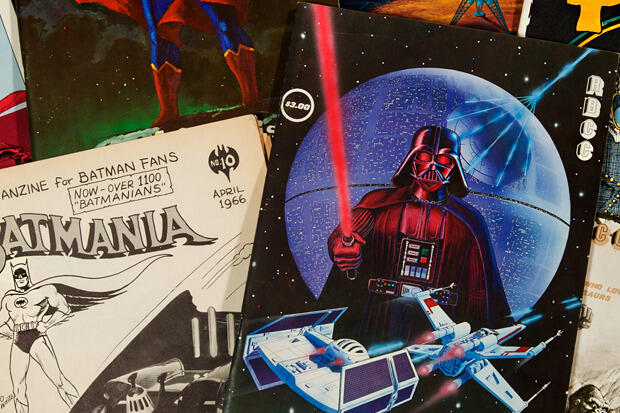
July 8, 2014
16 best-kept secrets of VCU’s massive comics collection
Share this story
In the 1970s, VCU Libraries began amassing what has grown into one of the country’s most impressive and academically significant collections of comic books and comics-related materials.
VCU’s Comic Arts Collection, which boasts more than 43,000 comic books and more than 150,000 items overall, provides researchers with a wealth of scholarly material and primary resources for the study of culture, history, art, language, politics, business and science through the lens of comic arts.
The collection, located on the fourth floor of James Branch Cabell Library in Special Collections and Archives, includes an array of comic books, graphic novels, original art, fan publications and rare periodicals, representing a variety of artistic styles, literary genres, time periods and subject matters. The collection is open to the public, Monday through Friday, 9 a.m. to 5 p.m.
Tucked away within VCU’s collection are a number of fascinating, valuable, frequently rare – and, occasionally, one-of-a-kind – comic books and artifacts.
Cindy Jackson, VCU’s library specialist for comic arts who manages the collection, recently highlighted and explained 16 of the most interesting examples of these best-kept secrets.
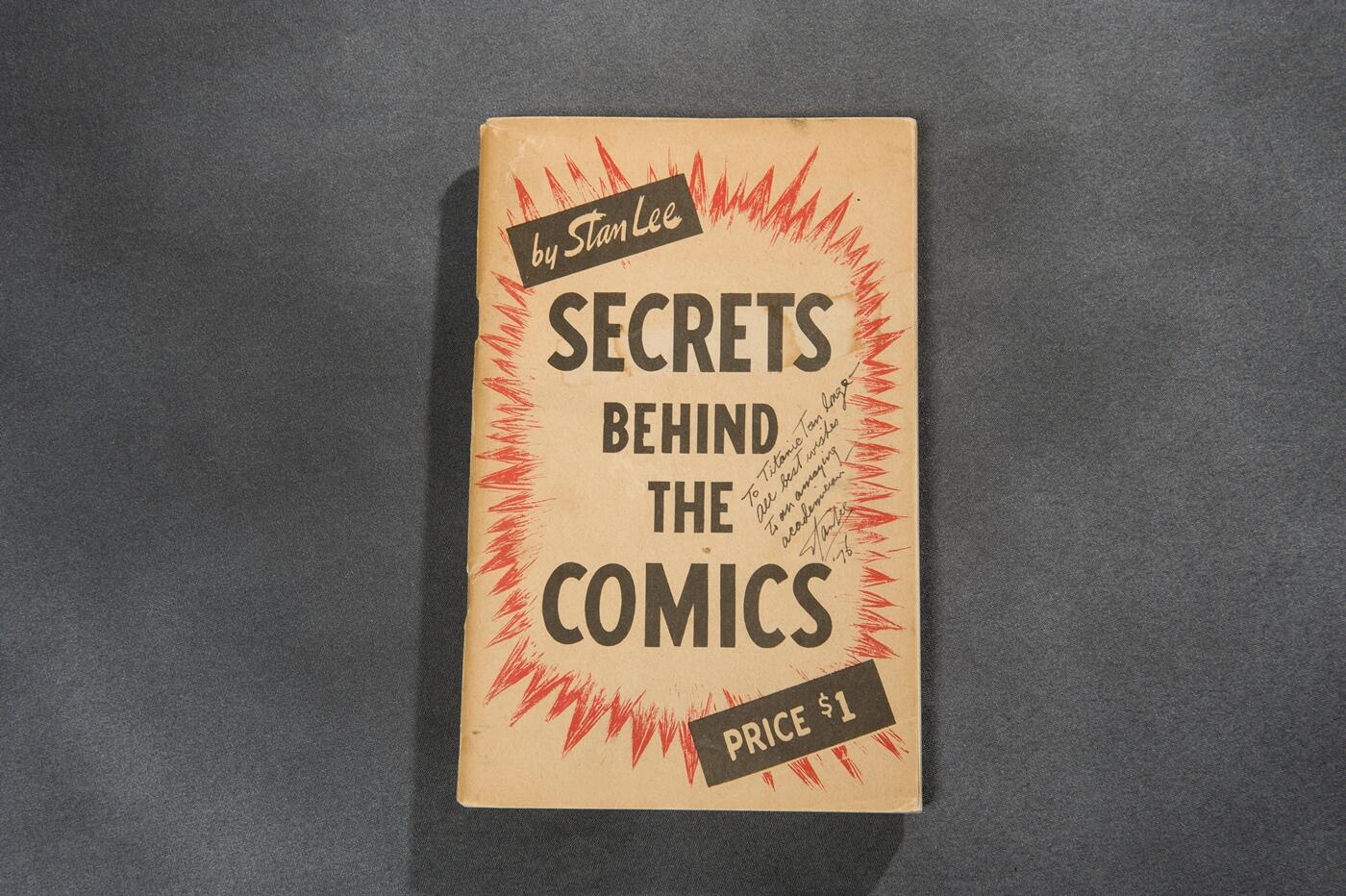
1. “Secrets Behind the Comics”
This book by Stan Lee – co-creator of Spider-Man, the Hulk, the Fantastic Four, Iron Man, Thor, the X-Men and more – was published during what is considered comics’ golden age and is essentially a how-to guide for creating comic books.
“Everybody was interested in comics at the time,” Jackson said. “This was ’47, so comics were still extremely popular and a lot of kids were growing up wanting to be comic book artists. This was Stan Lee’s introduction to how comics were born. It’s basically a how-to on the magic behind making comics.”
The book describes the “bullpen style” of creating comics books, in which publishers would gather together a bunch of artists in a room and assign them pages to draw.
“Nobody worked on just one title, generally. They were paid by the page for their work. And, because it was owned by the publisher, no one was usually credited for their work,” Jackson said. “But what’s really interesting about the bullpens is how many women, minorities and Jews were working there.”
The book was donated to VCU Libraries by M. Thomas Inge, Ph.D., a professor at Randolph-Macon College who is one of the nation’s leading comics scholars. Inge, who chaired VCU’s Department of English in the 1970s, worked with VCU Libraries to establish the Comic Arts Collection and has since made numerous contributions to it.
Lee autographed this copy of the book in 1976, personalizing it to “Titanic Tom Inge.”

2. “Acme Novelty Library”
VCU Libraries’ Comic Arts Collection has a complete set of Chris Ware’s “Acme Novelty Library” series, which has been coming out since 1993 and features early excerpts from Ware’s most famous graphic novel, “Jimmy Corrigan, the Smartest Kid on Earth,” as well as other key works.
“The very early [issues], because they were very limited press, are very difficult to come by,” Jackson said. “But right now, Chris Ware is ‘it’ in comics. He’s really amazing.”
Ware is famous for his stories’ structure, design and color palette, Jackson said, and he constantly surprises readers and upends their expectations.
“His latest book, ‘Building Stories,’ which we have here, is so cool,” she said. “It’s 14 individual pieces and everybody reads it differently. There’s no right way or wrong way to read it. And then it becomes intensely personal to you because how you read changes how you perceive the book. It’s a really cool experimentation in comics and in how people read.”
“Acme Novelty Library,” which features a variety of Ware's stories, is also known for featuring fake ads that evoke comics ads from the 1930s, and other unusual and innovative elements.
“In a lot of his books, you’ll find 3-D cutouts, which you can cut out and fold. He’s very into structure and design. He doesn’t waste space,” Jackson said. “And his color work is really beautiful because he uses a very odd color palette. It’s bright, yet it’s completely matte. There’s no shine to it. And he’s very aware of color and spatial design. “
Ware is “always challenging the format of comics,” she added. “He’s always challenging how you expect comics to look by using shapes. He’s always challenging the reader.”
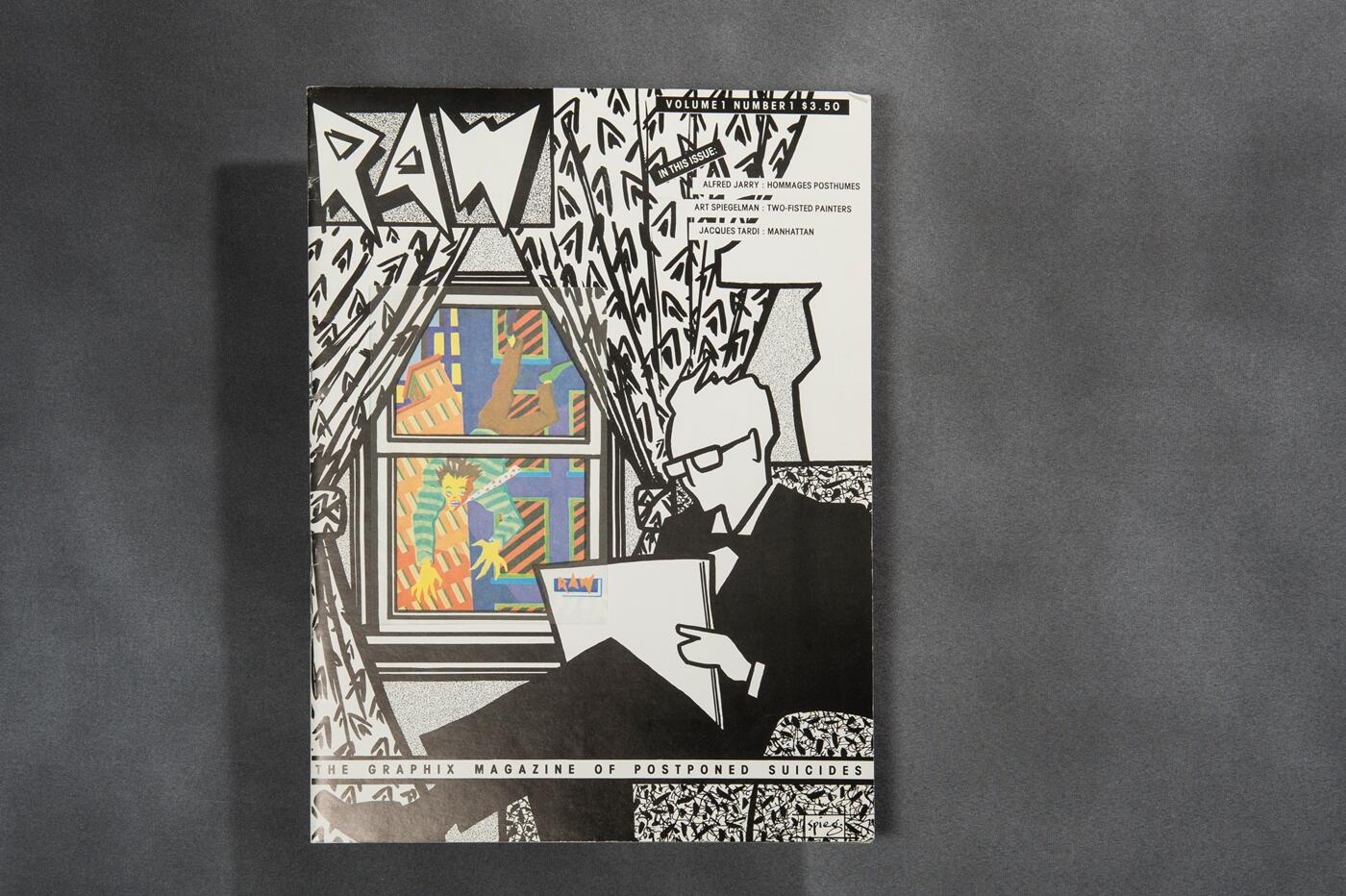
3. “Raw” No. 1
“Raw” was an alternative comics anthology that ran from 1980 to 1991 and was co-edited and published by Art Spiegelman and Françoise Mouly.
Spiegelman, who won a Pulitzer Prize in 1992 for his graphic novel “Maus,” sought in “Raw” to showcase the best alternative comics at the time, and he ultimately greatly influenced underground comics in the 1980s.
“‘Raw’ was extremely influential,” Jackson said. “In the early 1970s, early 1980s, comics had kind of lost their way. You’re at the end of underground comics. Superhero comics were kind of floundering. And there was all this great work being done but it wasn’t getting published anywhere other than in small, alternative newspapers or college newspapers.”
“Raw” featured work from a variety of creators, including Spiegelman. In later issues, it featured mini-issues of “Maus.”
“The first introduction to ‘Maus’ [in the artistic style we know today] was stapled into issues of ‘Raw,’” Jackson said.
In the first issue, Spiegelman has a minicomic stapled into the centerfold called “Two-Fisted Painters.”
“[Spiegelman] has always been on the cutting edge of comics,” Jackson said. “Even people who don’t normally read comics recognize Art Spiegelman.”
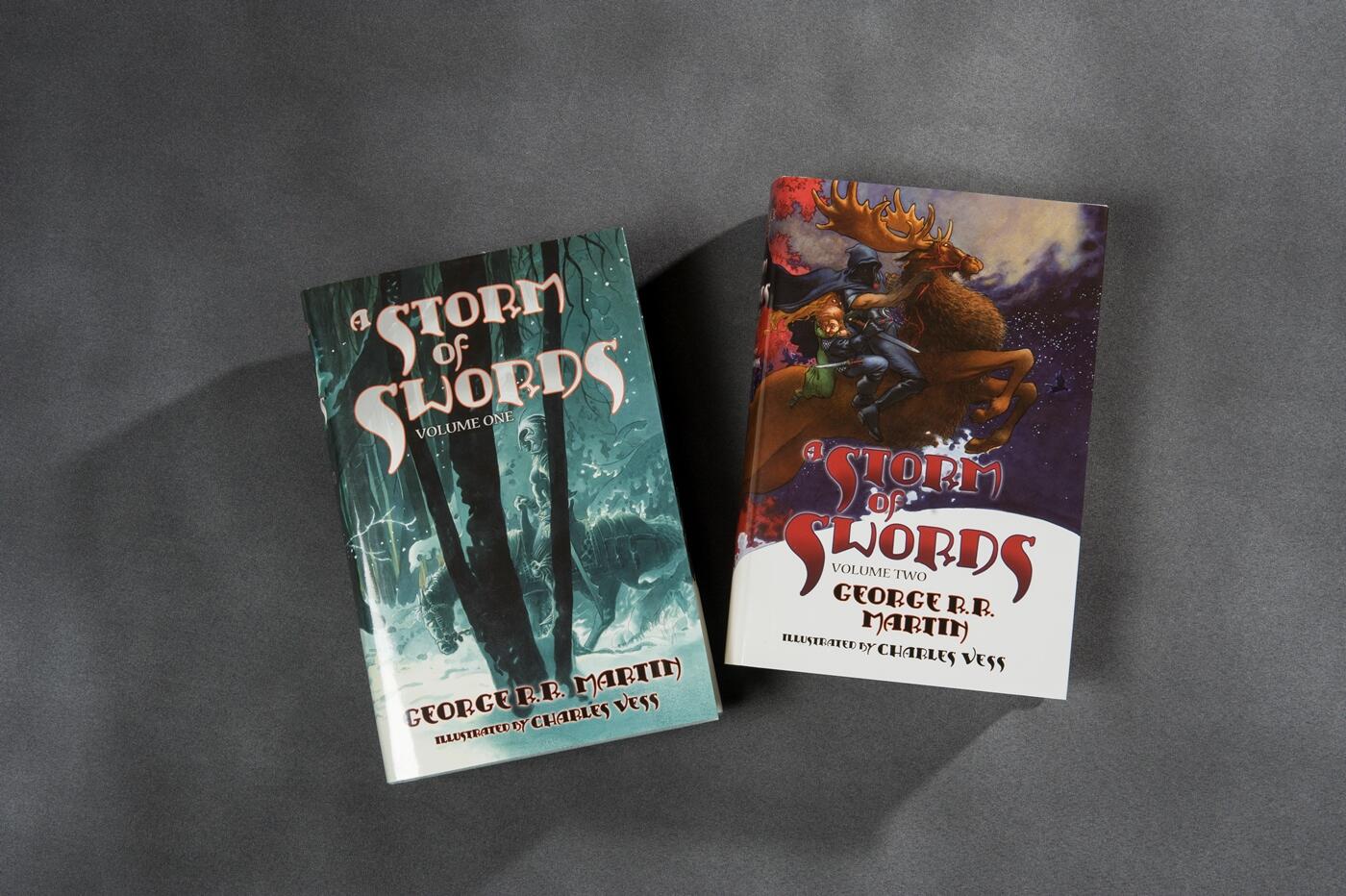
4. “A Storm of Swords”
“A Storm of Swords” is the third book in George R.R. Martin’s “A Song of Ice and Fire” fantasy series, on which the HBO show “Game of Thrones” is based. A very limited edition of the novel featured illustrations by Charles Vess, a notable fantasy and comics artist and graduate of VCU.
There were only 448 numbered copies of the limited edition “A Storm of Swords” and only 26 lettered copies. The library’s copy is one of only two “pc” – or presentation copies – that were printed, as it was Vess’ personal copy of the book.
The two-volume, slipcase version of the book is signed by both Martin and Vess and features additional original sketches by Vess.
“We have people who come in just to bow down before it,” Jackson said.
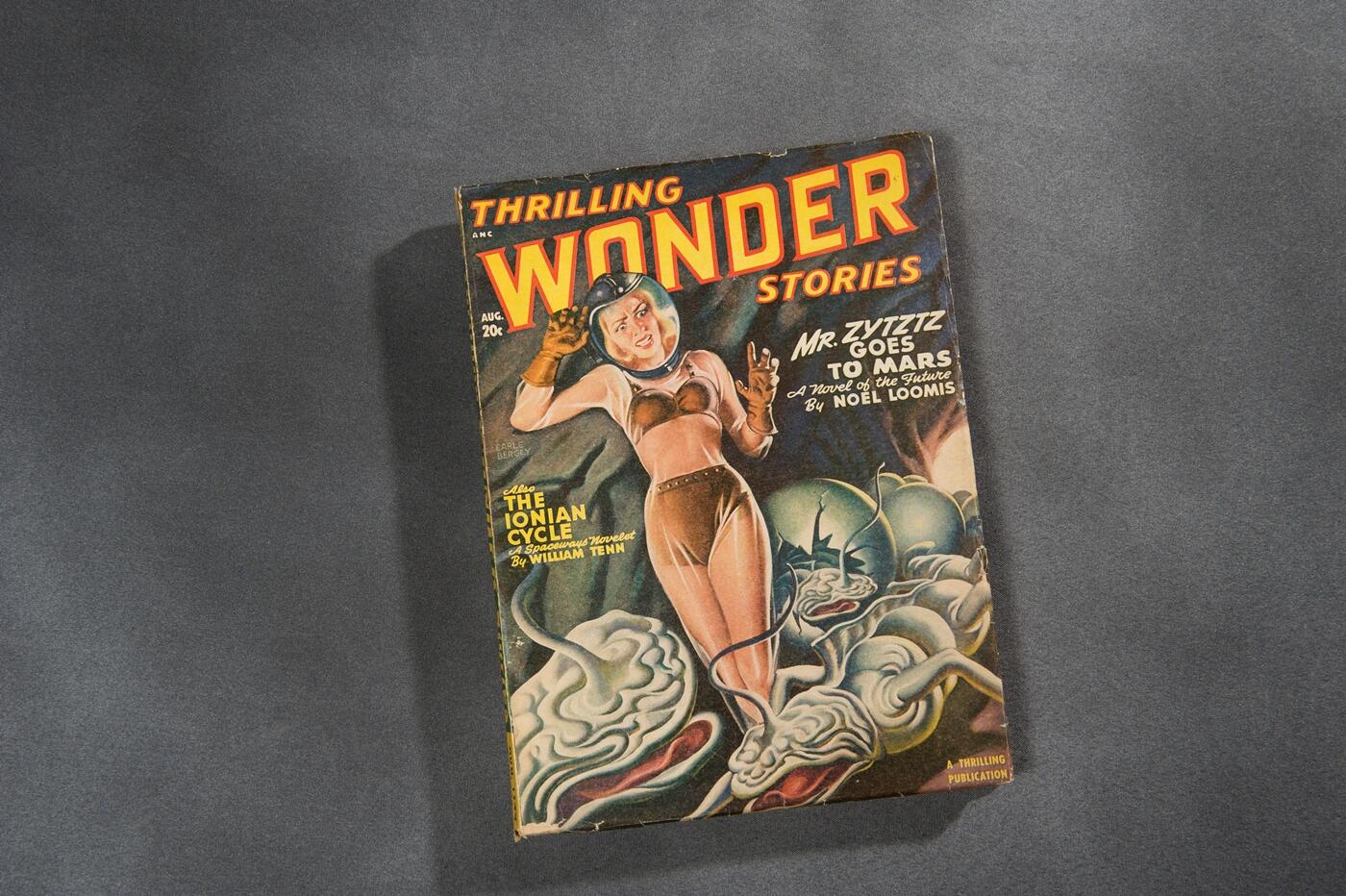
5. Pulp magazines
The collection includes a number of pulp magazines, including this August 1948 issue of “Thrilling Wonder Stories.”
“They were cheap, knockoff magazines that ran the gamut of all genres,” Jackson said. “You could get pulp in science fiction, fantasy, Western, crime, romance. They were meant for cheap reading entertainment. It was something you’d pick up if you were going on a bus or train ride. And kids read them because they were often considered salacious.”
Pulp magazines are revered today for their cover art, as well as their short fiction. In this issue, there are three complete novelettes and five short stories.
“Some quite famous writers – like Theodore Sturgeon, a famous science fiction writer right here [in “Thrilling Wonder Stories”] and Ray Bradbury – got their start writing in pulps,” Jackson said. “A lot of novelists, especially in science fiction and fantasy, got their start by submitting stories to pulps. That’s how you honed your craft.”
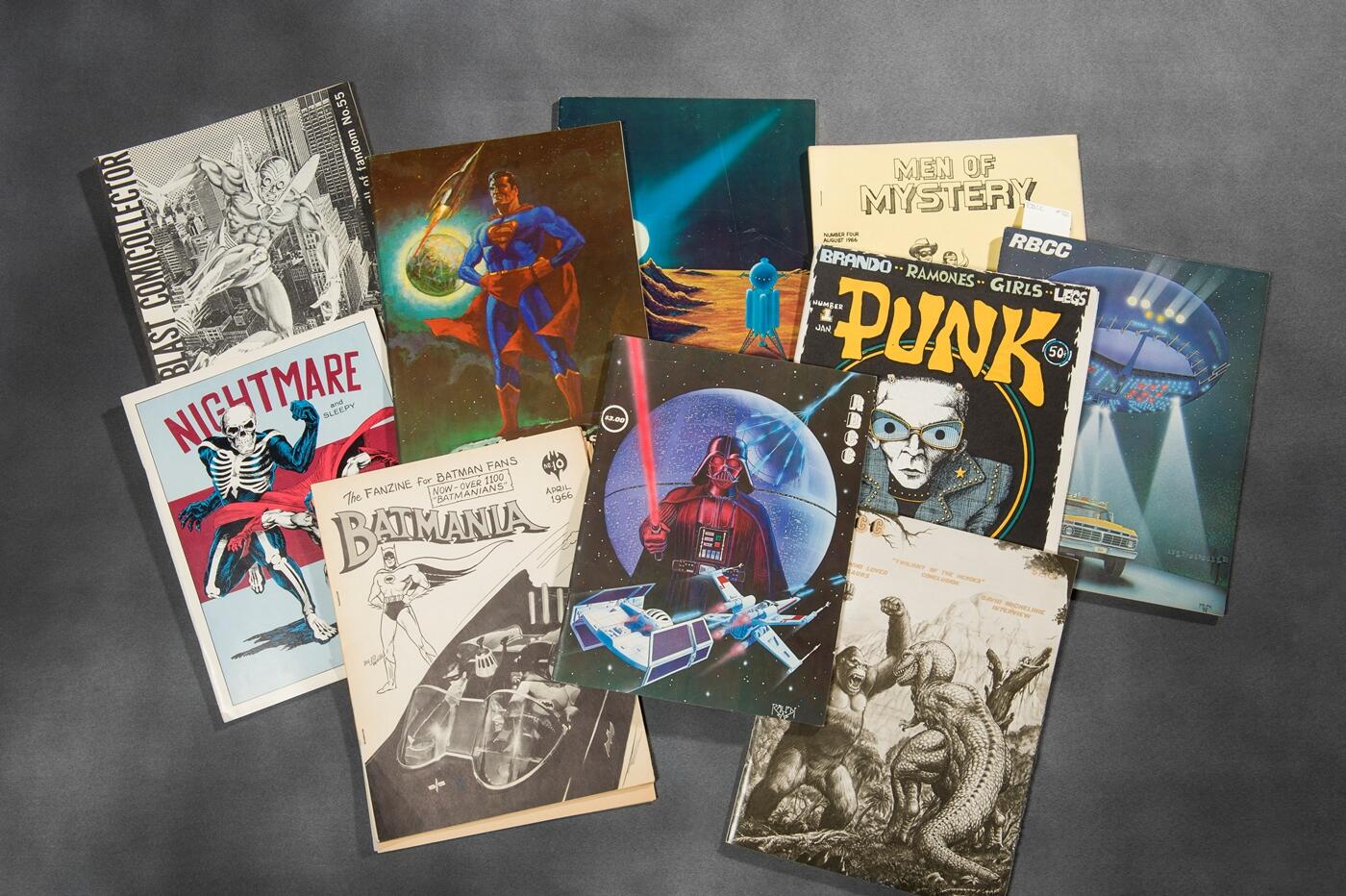
6. Fanzines
Fanzines, or fan-created magazines, are self-published periodicals – mostly in the ’60s, ’70s and ’80s – on fantasy, science fiction, superheroes and other niche or underground topics.
The Comic Arts Collection includes a wide array of fanzines, focused on topics such as Batman, punk rock, Star Wars, Star Trek and much more.
“Some of them, like ‘Rocket Blast,’ were pretty serious magazines, while some of the science fiction and fantasy ones might just publish amateur writers’ stories,” Jackson said. “Fan fiction was published in these as early as the ’60s. That’s where Star Trek fan fiction got its start. We have a ton of those issues.”
Fanzines exist today, she added, but they’re primarily online on blogs now.
The collection’s fanzines are important, Jackson said, as they provide the fans’ perspective. “It’s outside industry so you get to see what the real fans thought and how they viewed science fiction or fantasy,” she said. “It gives you a look into the fan’s psyche.”
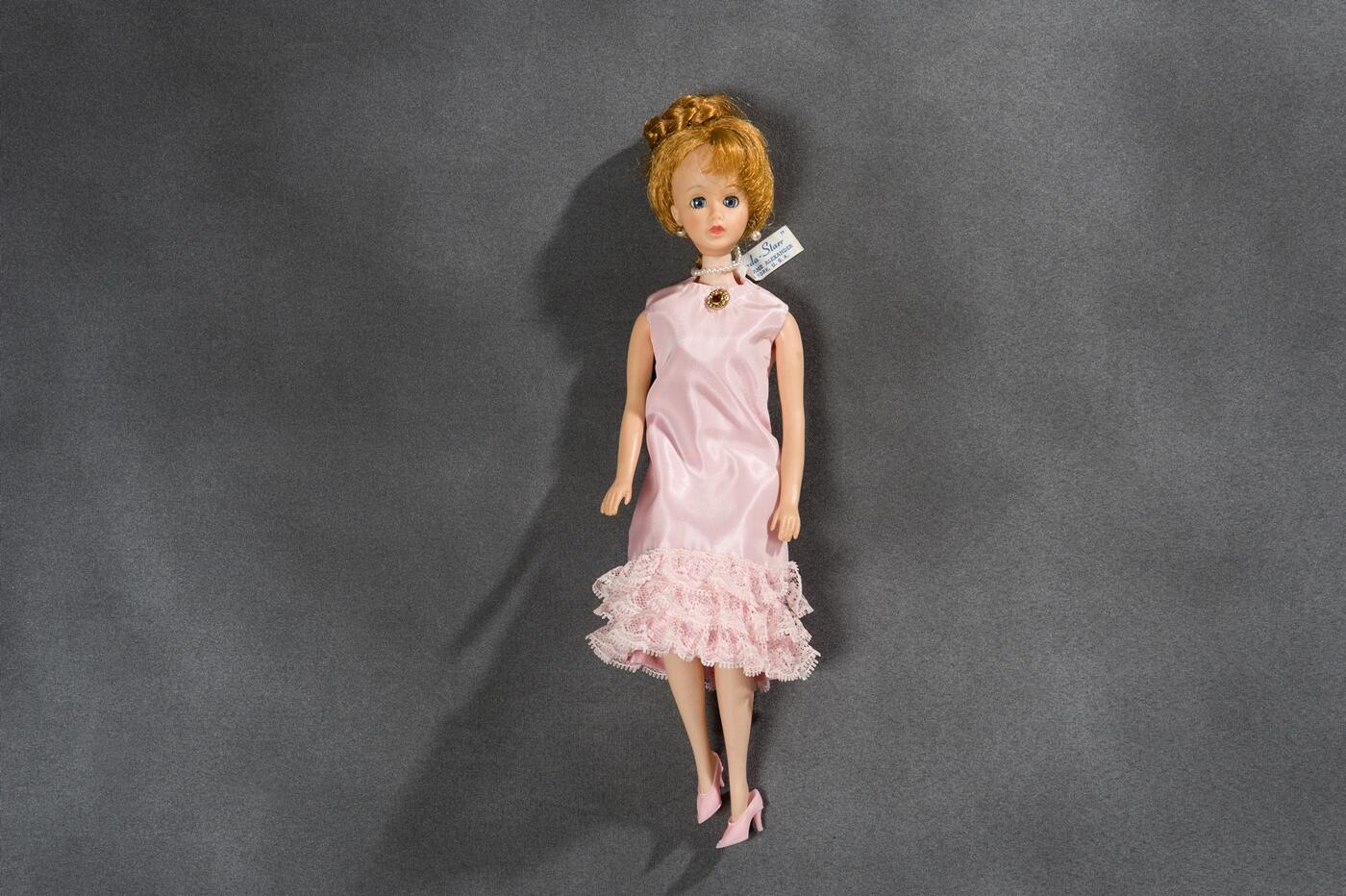
7. Brenda Starr doll
The Comic Arts Collection has much more than just comics and books. It also has a significant amount of comics-related memorabilia, such as this 1960s-era doll, depicting Brenda Starr from the “Brenda Starr, Reporter” newspaper strip that ran from 1940 to 2011.
“Brenda Starr was a newspaper reporter and she traveled around the world,” Jackson said. “There was action, adventure and romance.”
The doll, she added, is an example of how the comics industry has always “marketed everything.”
“It also just shows that comics weren’t just for boys,” she said. “This was marketed to women at a time when comics were marketed mostly to boys.”

8. Superman peanut butter
This jar of Superman peanut butter from 1981 is another ephemeral piece in the collection.
Donated by M. Thomas Inge, the unopened jar is a fairly rare item, released the year following Superman II.
“We’re not so sure it’s still good,” Jackson said. “But it’s never been opened.”

9. Underground comics
The collection has a sizable number of underground comics, mostly from the early 1970s, including the debut issue of “Wimmen’s Comix” from 1972.
“Underground comics were great because they gave women an outlet in comic books that wasn’t otherwise available to them,” Jackson said. “They were allowed to do comics on their terms, and not just do superhero comics or as part of a bullpen or at a major publishing company.
“They could write stories that they wanted to write, do the art as they wanted, they could be as risqué and sexually explicit as they wanted to be,” she continued. “And they could write about things that concerned them or they were interested in.”

10. “Love and Rockets” No. 1
Written by the Hernandez brothers, “Love and Rockets” debuted in 1982 as one of the first comics of the alternative comics movement in the 1980s.
“It’s interesting because it’s a Hispanic work and it was part of that L.A. punk rock scene that was going on at the time,” Jackson said. “It was a big influence on that small publishing, alternative comic movement in the ’80s.”
Notably, Jackson added, “Love and Rockets” is known for its groundbreaking portrayals of strong female characters.
“It’s interesting because it was written by men, but it really paved the way for female cartoonists,” she said. “You get a lot of comics coming out in the ’80s that featured a strong female character and that were influenced by Love and Rockets. It was non-superhero, non-mainstream. It was truly the alternative to that mainstream comic.”
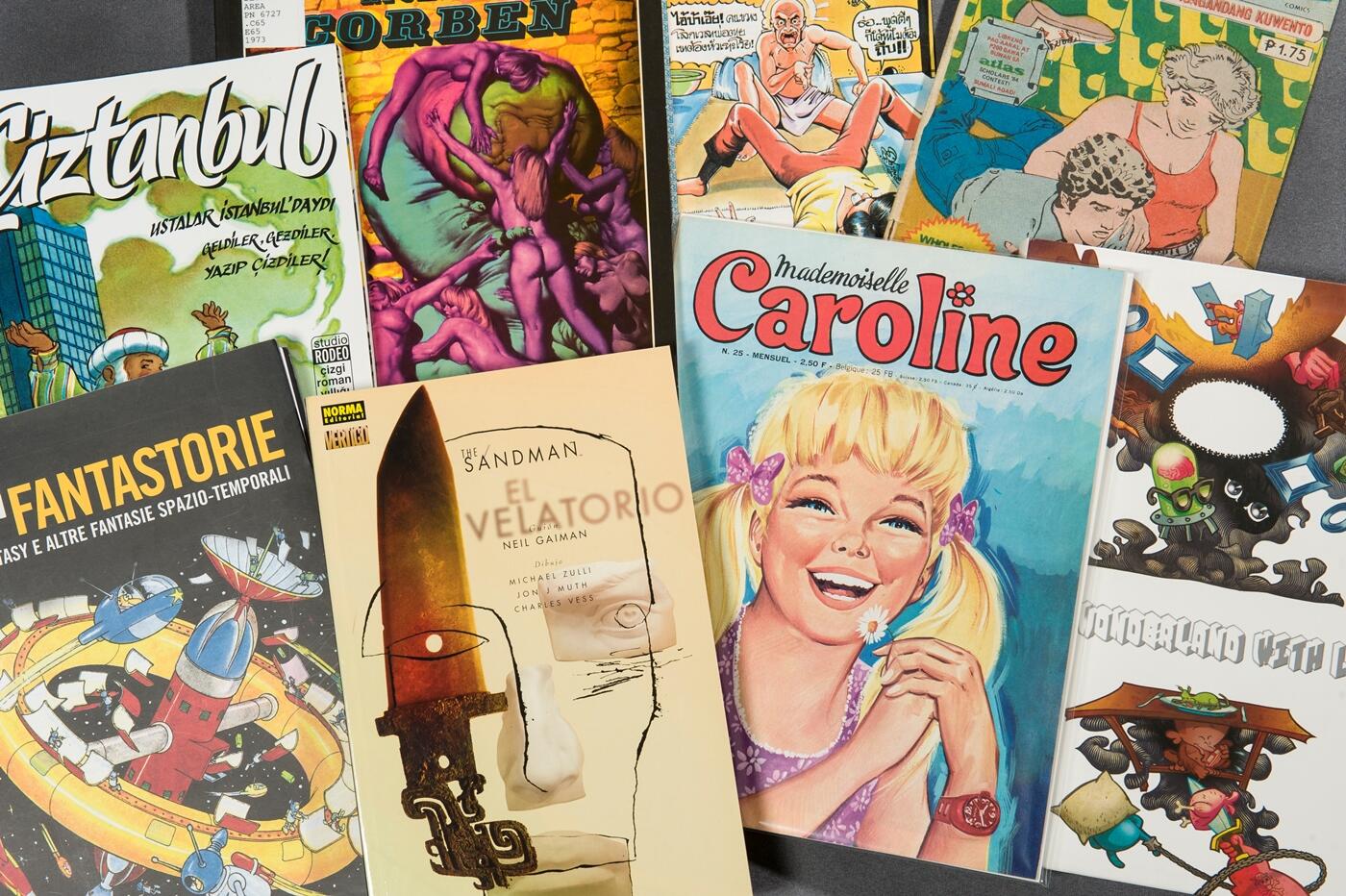
11. Foreign language comics
The collection includes quite a few foreign language comics, including comics written in Spanish, German, French, Hindi, Portuguese and Arabic, as well as manga written in Japanese.
“I want our foreign language students or students who are studying a foreign language to realize that we have foreign language comics here,” Jackson said. “When I was in college and taking German, I was reading ‘Calvin and Hobbes’ and ‘Sandman’ in German because it’s not that difficult to read and you can practice your language skills.”
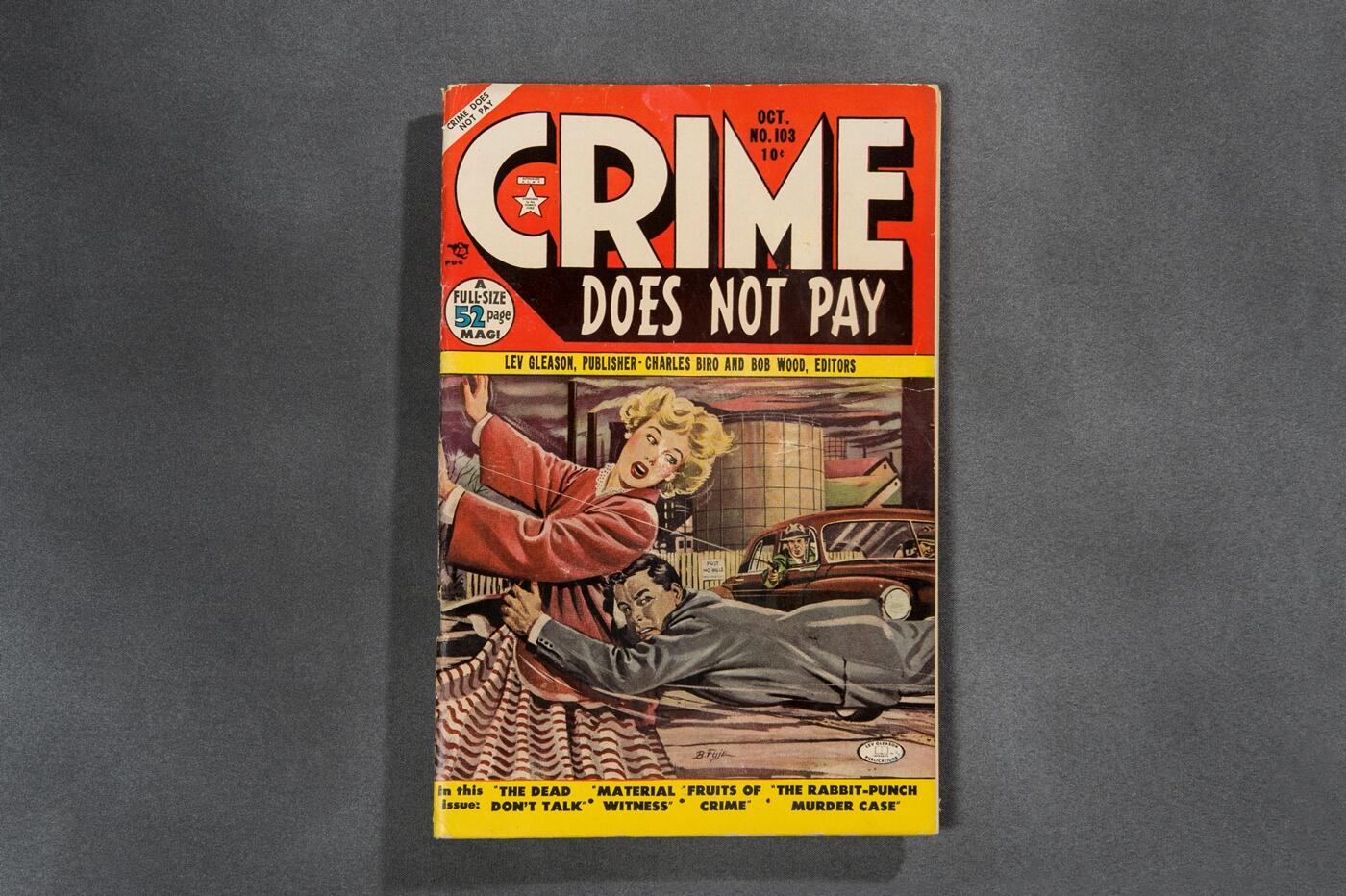
12. “Crime Does Not Pay” No. 103
“Crime Does Not Pay” was a comic published mainly in the ’40s that was known for its sensationalized portrayal of crime and extreme violence, and was cited in the U.S. Senate Subcommittee on Juvenile Delinquency hearings in 1954 that ultimately led to the formation of the Comics Code Authority.
“‘Crime Does Not Pay’ really shows how different comics were before the Comics Code, which was a self-imposed code that the comics industry instated to regulate itself to keep the government from regulating them,” Jackson said. “They based it on the movie ratings system.”
“It was so stringent for a while there in the ’50s that [comics writer] Marv Wolfman couldn’t even use his last name because you couldn’t mention werewolves or vampires or the undead,” she said. “It was ridiculous. Everything good from comics was removed.”
VCU Libraries has a handful of comics like this issue of “Crime Does Not Pay,” from October 1951, and is seeking to add more pre-code comics to the collection.
“Batman in the ’40s is really great because it’s dark and it’s gritty and it’s violent,” Jackson said. “And then you get the very campy Batman in the ’50s and ’60s and [the Comics Code is why]. You couldn’t show all the dark grit and the crime. If you showed a crime, then the criminal had to pay, you couldn’t get away with it. You couldn’t show violence or drug use, there was no sex at all. Thank God Frank Miller brought it all back [in the 1980s].”
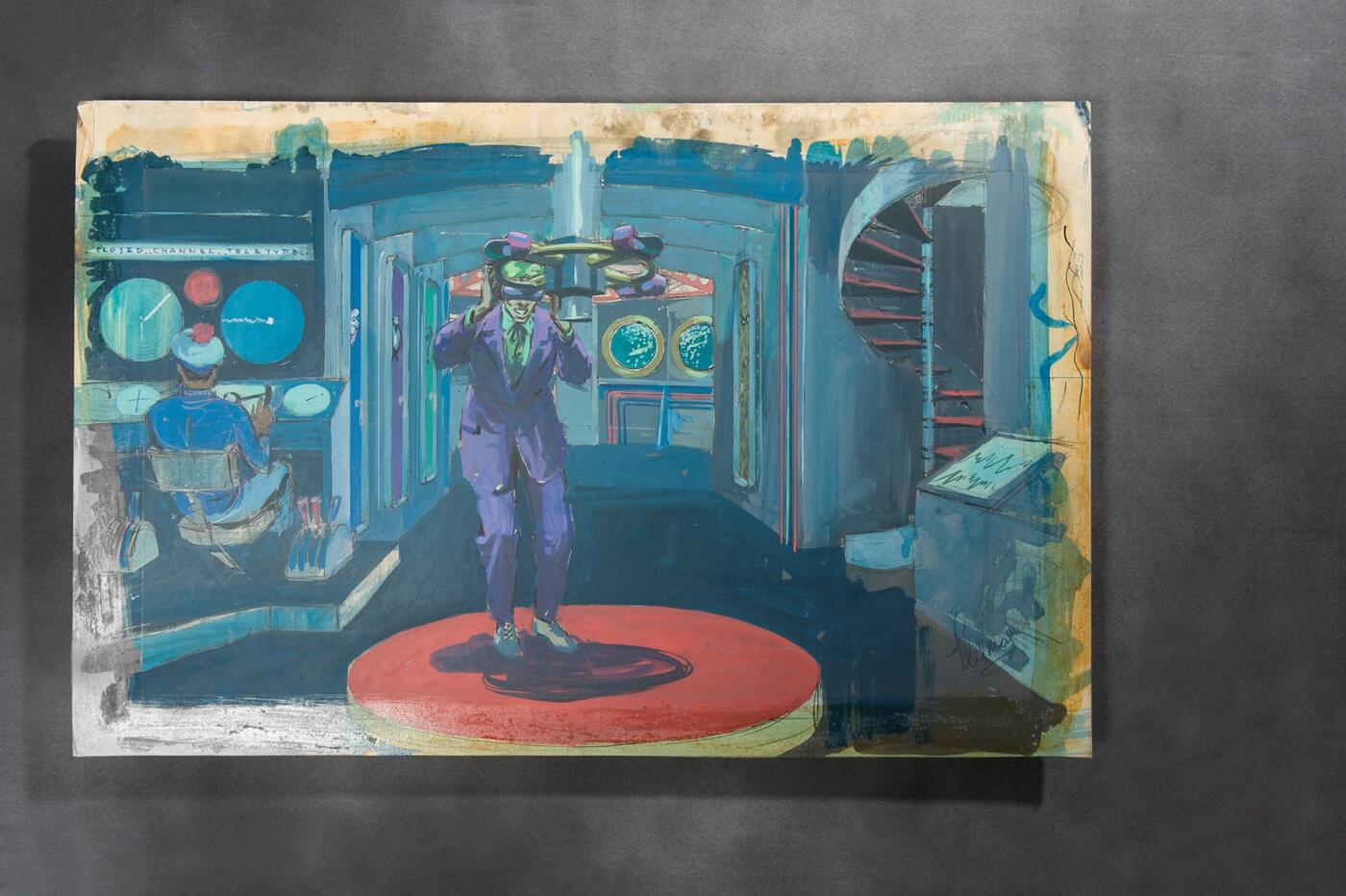
13. Batman movie set design painting
Included among the collection are 38 set design paintings from the Batman TV series and movie in the 1960s.
This painting is a set design of the Penguin’s submarine in the 1966 Batman movie.
“It was an artist’s conception of what the set was going to look like,” Jackson said. “They’re one-of-a-kind pieces.”
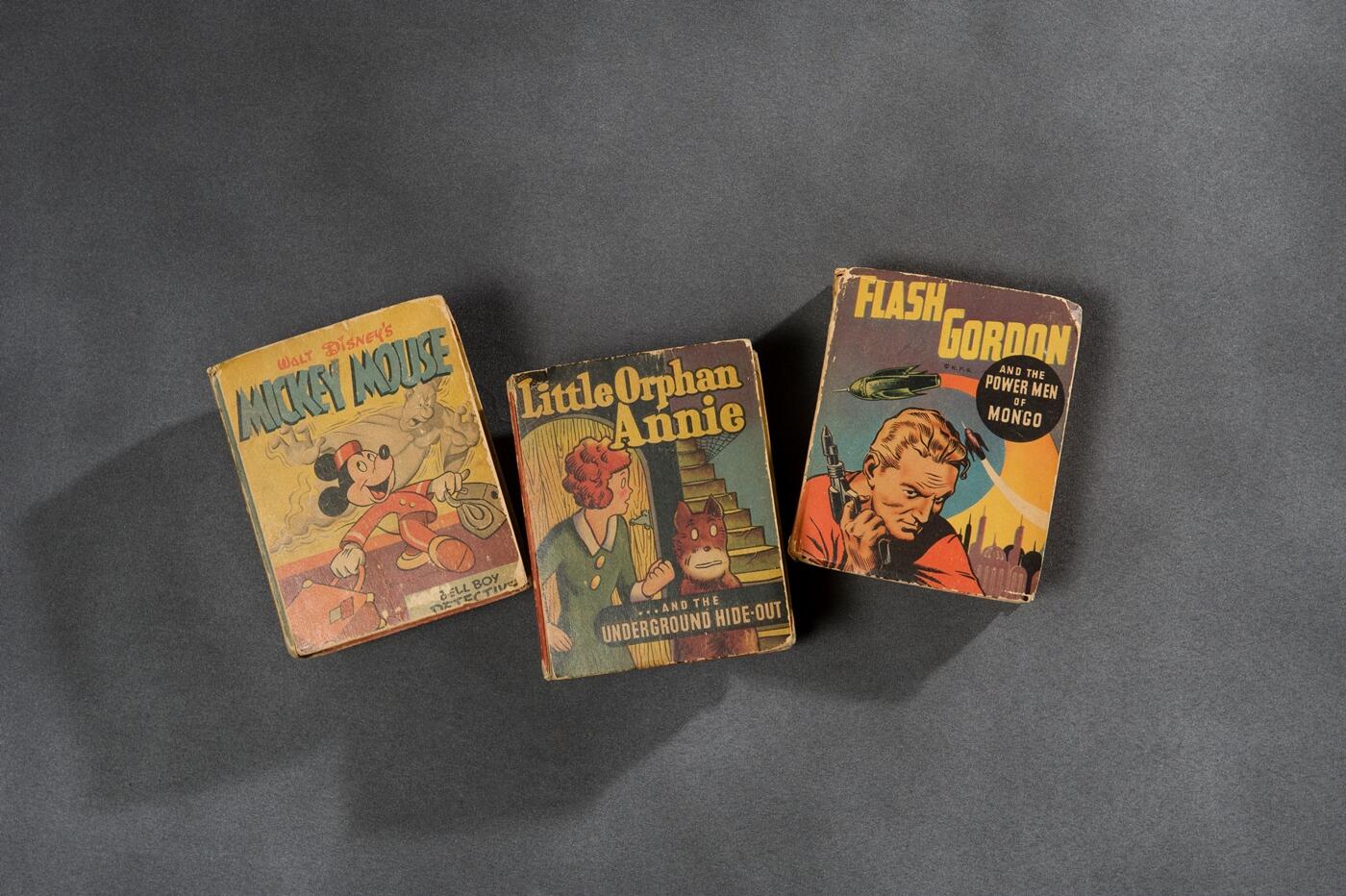
14. Big Little Books
Big Little Books were designed for children, often based on newspaper strips or cartoons, that were most popular in the 1930s and ’40s, but published up through the early ’70s.
“They were a mix between comics or prose and pictures,” Jackson said. “They were designed to be early reading books for children, with big print, and an easy-to-follow story. Today, they’re highly collectible.”
VCU Libraries’ collection of Big Little Books includes titles such as “Mickey Mouse: Bell Boy Detective,” “Flash Gordon,” “Little Orphan Annie” and “Dick Tracy,” as well as more factual, biographical ones, such as a 1956 book on boxer Joe Louis.
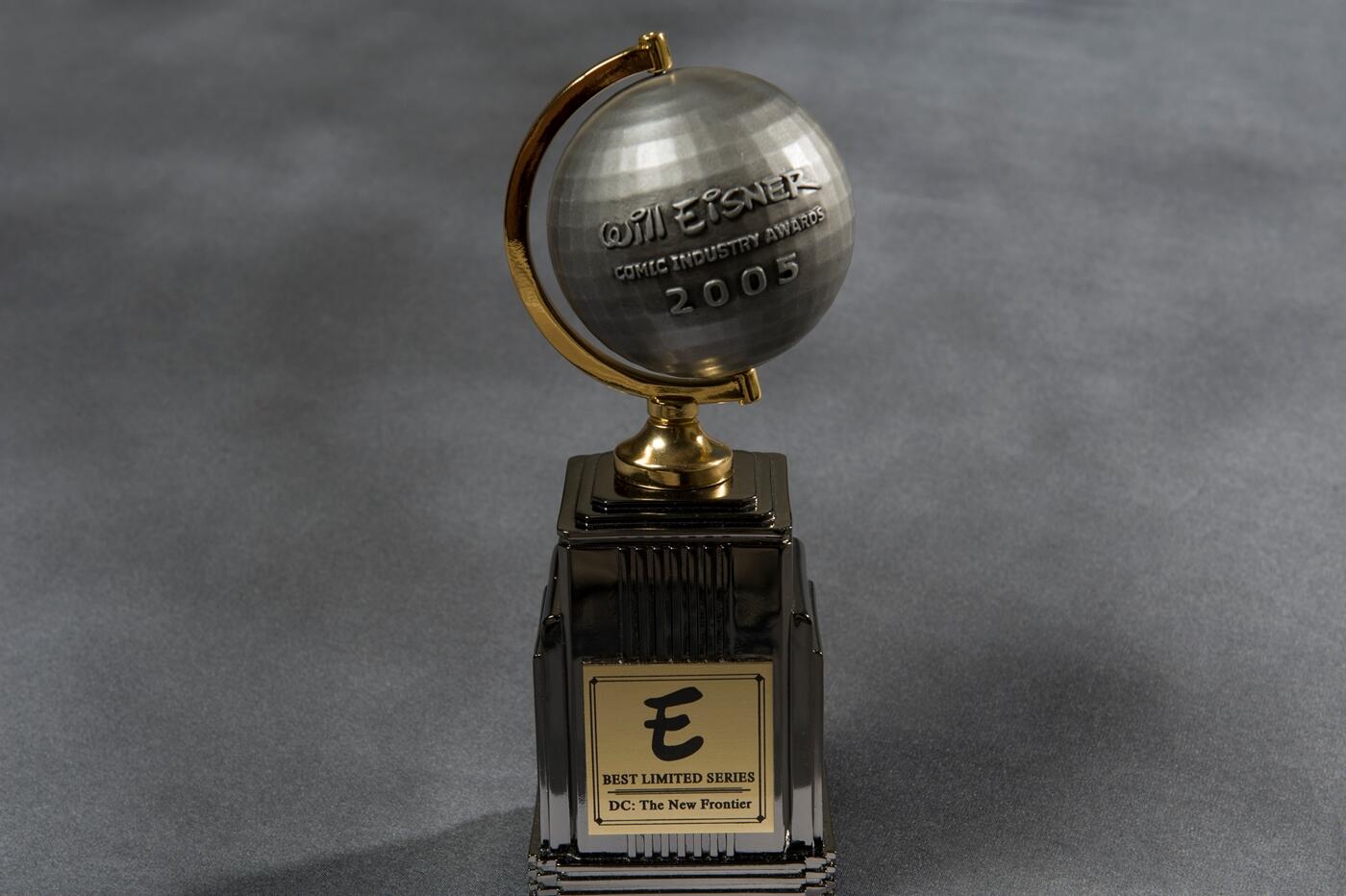
15. Will Eisner Comic Industry Awards Collection
The Comic Arts Collection was made the official repository for the Will Eisner Comic Industry Awards in 2005, meaning that it receives copies of all the Eisner nominees and winner each year, including books, comics, journals and more.
“It’s been an amazing relationship between the Eisner Awards and us because that has allowed us to add current materials to the collection that otherwise we wouldn’t have ever been able to afford,” Jackson said.
“Every year, we get anywhere from 75 to 125 books, depending on how many volumes were submitted for consideration,” she said. “The Eisner Awards always take place on the Saturday of Comic-Con, which is usually the third week in July. And, ’round about September, we have Christmas.”
In addition to the books and comics, VCU’s Eisner collection includes two Eisner Awards, including this one for “DC: The New Frontier” for Best Limited Series.
“It was part of the initial donation in 2005, representative of what these awards look like. Everybody likes to hold it because it’s like holding an Oscar.”
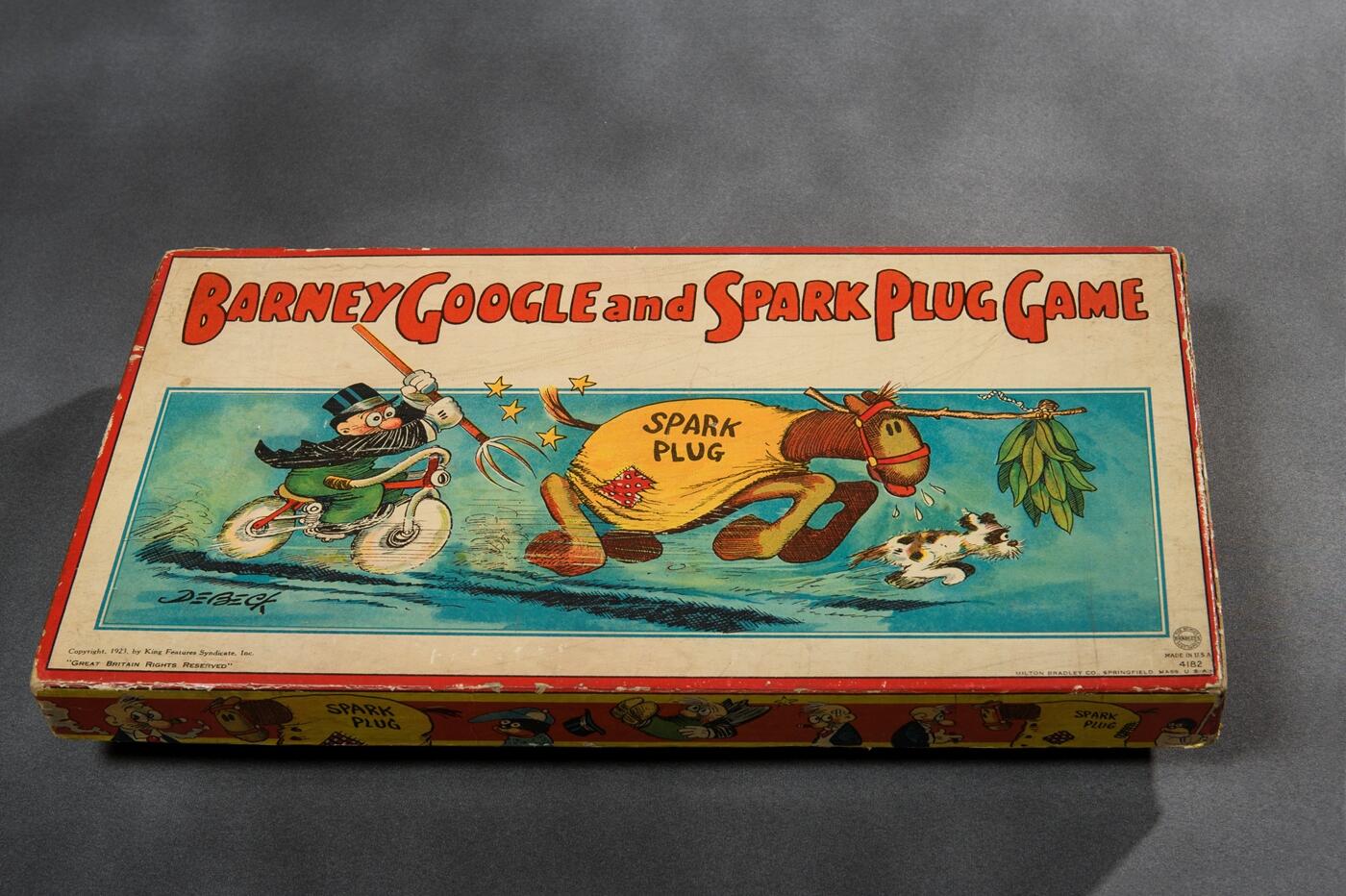
16. Barney Google and Spark Plug game
The Barney Google and Spark Plug board game, circa 1923, is part of the Comic Arts Collections’ items related to Billy DeBeck, a famous newspaper comic strip artist in the 1920s and ’30s who created the character of Barney Google, who was extremely popular in those decades.
“Barney Google was just kind of a rich guy,” Jackson said. “It was a humor strip. Spark Plug was his race horse. Late in the ’30s, he went to a cousin’s wedding in Appalachia and that’s when they added Snuffy Smith. Eventually Barney Google falls away and the strip begins to focus on Snuffy Smith only.”
Along with the board game, VCU Libraries has more than 120 books from DeBeck’s personal library, numerous original sketches, notes he used for the strip and even his office door that features an oil painting of Barney Google and Spark Plug.
Subscribe for free to the weekly VCU News email newsletter at http://newsletter.news.vcu.
Subscribe to VCU News
Subscribe to VCU News at newsletter.vcu.edu and receive a selection of stories, videos, photos, news clips and event listings in your inbox.






